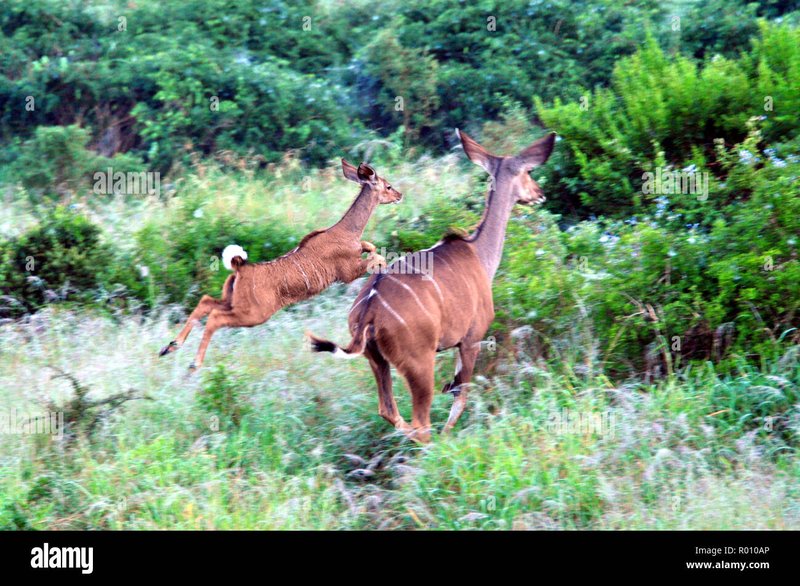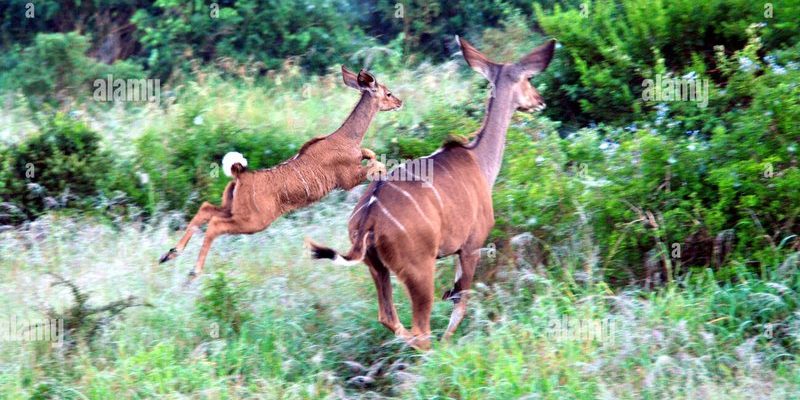
Now, if you ever find yourself face to face with a kudu, what should you do? Here’s the deal: while these creatures are generally peaceful and shy, it’s important to know how to react. Just like any encounter with wildlife, understanding their behavior and how to stay safe is vital. Think of it as a dance; you lead with caution, respecting their space and instincts. Let’s explore what to do when this breathtaking animal crosses your path.
Understanding Kudu Behavior
Kudus are fascinating animals that can weigh up to 600 pounds and stand over 4 feet tall at the shoulder. With their striking grayish-brown coats and white stripes, they blend beautifully into their surroundings. But beyond their looks, their behavior is intriguing too. Generally, kudus are peaceful and prefer to avoid confrontation. They are most active during the early morning and late afternoon, so if you’re in the wild during these times, keep your eyes peeled!
Now, you might be wondering how to recognize when a kudu is feeling threatened. When a kudu senses danger, it often freezes in place, relying on its incredible camouflage to remain unseen. If that doesn’t work, it may bound away, leaping gracefully with its long legs. So, if you spot one, observe its body language. If the kudu seems calm and unbothered, it’s likely more interested in munching on leaves than in causing trouble.
Stay Calm and Assess the Situation
Encountering a kudu can be exhilarating, but it’s essential to stay calm. Take a moment to assess the situation. Is the kudu aware of your presence? Are there other animals nearby? Being aware of your surroundings will help you make better decisions moving forward. If the kudu seems relaxed and isn’t approaching you, it’s best to keep your distance and enjoy the view.
If the kudu is close by, this is where your instincts kick in. Think about your next moves. Persuading a wild animal to leave can escalate quickly, so take a step back instead. When wildlife feels threatened, it can react unpredictably. Remember, you’re the guest in their home, and respecting their space is crucial.
How to React if a Kudu Approaches
So what happens if a kudu starts walking toward you? Well, here’s the thing: don’t panic. A kudu might approach out of curiosity or just to get a better look. Stand still and refrain from sudden movements. Your goal here is to remain unthreatening. If it gets within a few feet, calmly walk backward to create some space.
Avoid staring directly into the kudu’s eyes; this can be perceived as a challenge. Instead, keep your body relaxed, and let it wander where it pleases. If the kudu seems interested, you can take a few soft steps back while continuing to observe. It’s an incredible moment to cherish, but your safety and the animal’s comfort are the top priorities.
Safe Distances and Photography Tips
If you’re a photography enthusiast, capturing the kudu’s beauty is tempting, but you’ll want to maintain a safe distance. Generally, keeping at least 50 yards away is a great rule of thumb. This distance allows you to get some fantastic shots without disturbing the animal.
When taking photos, use a zoom lens to capture those close-up details without getting too close. Remember that a quick snapshot is not worth risking a risky encounter. If the kudu shows any signs of agitation, such as pacing or stomping, put the camera down and back away slowly. This approach not only preserves your safety but also protects the animal’s sense of security.
Local Guidelines and Regulations
Different regions have various rules regarding wildlife encounters, which are designed to keep both animals and visitors safe. Before heading out, check local guidelines or park regulations about kudu encounters. Some areas might limit how close you can get to these animals or provide specific instructions on what to do in case of an encounter.
Following these guidelines is crucial. Not only do they protect you, but they also help ensure the well-being of wildlife. For instance, in certain reserves, feeding animals or getting too close can disturb their natural behavior and habitat. Understanding and respecting these rules is part of being a responsible visitor in the wild.
What to Do if the Kudu Is Aggressive
In rare situations, a kudu may feel threatened and act aggressively. Honestly, this isn’t common, but it can happen, especially if a female has a calf nearby. If you encounter a distressed or aggressive kudu, your safety is the priority.
Start by slowly moving away from the animal—don’t turn your back on it or run. This could provoke a chase response. Maintain a calm and steady posture, and back away to a safe distance. If the kudu charges, look for a safe spot, like a tree or rock, to put between you and the animal. Keep in mind that most kudu would prefer to avoid conflict altogether, so staying calm can often defuse a tense situation.
Respecting Nature and Wildlife
Ultimately, having a close encounter with a kudu is an opportunity to appreciate the beauty of nature. It reminds us that we are visitors in their world. Respecting wildlife is essential—not just for your safety, but for the health of the ecosystem as well.
By understanding how to conduct yourself around animals like kudus, you contribute to a more harmonious relationship between humans and wildlife. Every encounter in nature is a chance to learn. So, if you’re ever lucky enough to encounter a kudu, take a moment to appreciate its grace and beauty.
As you venture into the wild, remember: stay calm, respect wildlife, and enjoy the incredible experience of being in nature. Whether you come across a kudu or any other creature, these principles will serve you well.

